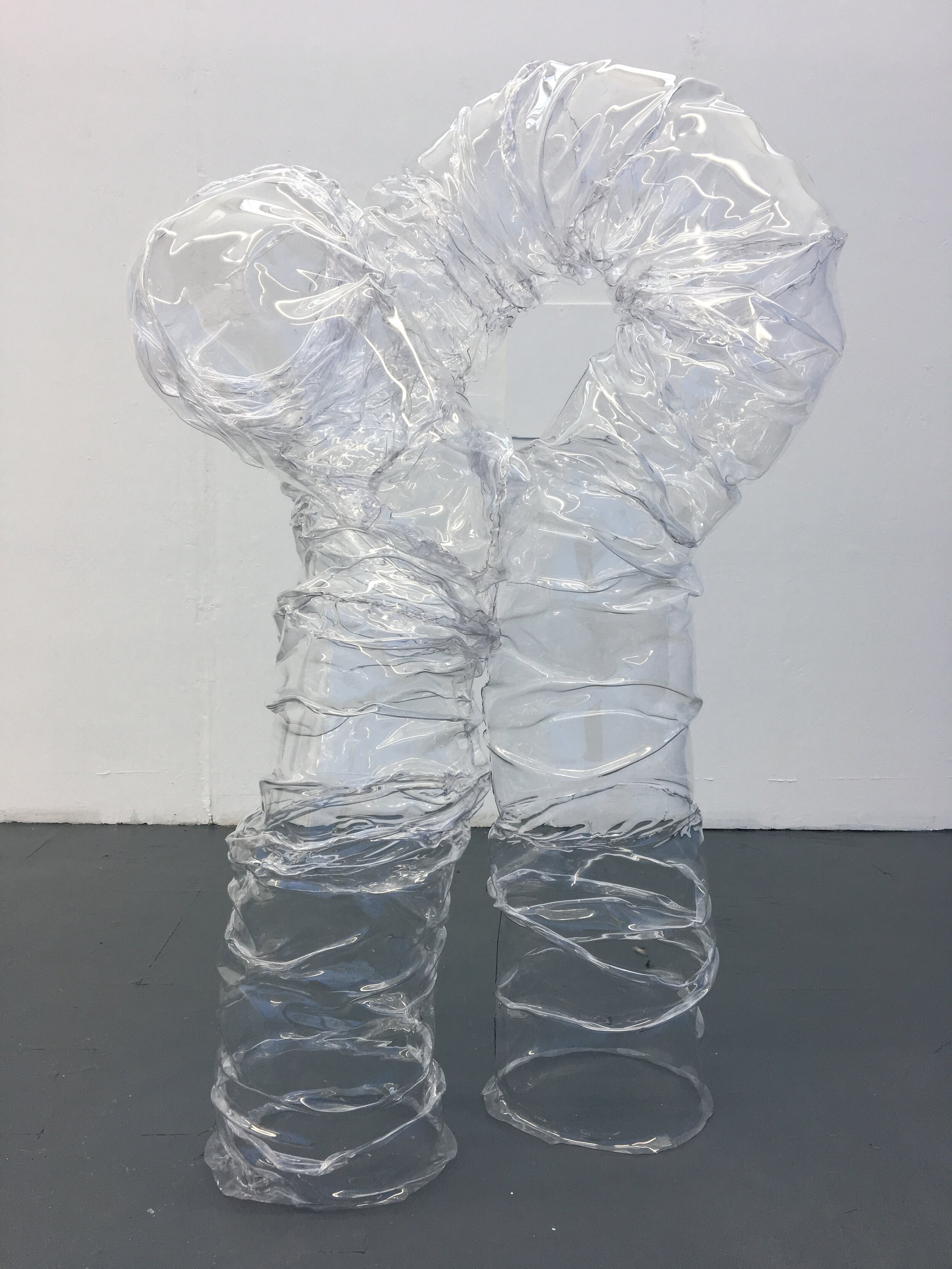
Tubeworms
These sculptures are made from post industrial plastic and reference deep ocean tubeworms, an organism that has evolved to survive in a toxic environment without light. This work imagines a type of organism evolved to consume plastic, becoming more plastic-like in the process
What is plastic doing?
I work with post industrial recycling companies and plastic brokers to understand the large system of plastic waste and recycling. I use this recycled plastic in my work and this video is me trying to find material for my sculptures.
My work imagines plastic as having its own agency, eventually becoming its own life form based on simple organisms. My work questions the material as inert when recent evidence proves plastic can mimic hormones, bond to blood and fat, and alter DNA. The physical installation embodies an immersive evolutionary time period when the animistic qualities of plastic’s vital materialism become manifest. By walking through my installation I encourage viewers to think not just boldly, but broadly about plastic. How will we learn to live with plastic? How will it change our world?
Imagine Plastic
Shaping plastic
I use a heat gun to shape sheets of PETG (Polyethylene terephthalate glycol), commonly used in water bottles. PE and close members of that family are the most popular plastic in the world and the most manufactured. In the textile world it’s known as polyester. PETG is crystal clear, stretchable when hot, has a low heat rating, fire resistant, and will not off gas unless burnt. I use a heat gun to slowly grow and bend the cylinders to form the character of the tubeworms into positions of eating, mating or socializing.
Plastic as a super material
By transforming plastic into representations of new life forms I make visible the contradictory forces at play when plastic is considered both trash and a super material of the 20th and 21st century. I imagine plastic as a life giving and life altering agent and as a material which should be considered precious. I have created this work because I feel that a public awareness of plastic’s agency is crucial to understanding its deep and long-lasting impacts, which I hope will prompt change in how we research, use, and value plastic in our daily lives
Tubeworms
My sculptures imitate the shapes of deep ocean tubeworms that use chemosynthesis to live in almost boiling water near the cracks of mud volcanoes. Chemosynthesis helps the tubeworms survive off the toxic soup of chemicals lethal to most animals. Monterey Bay Aquarium Research Institute spokesperson Charlie Paull states to the BBC, “The tubeworms bring in methane and oxygen, the two things that bacteria need, and the bacteria get to work synthesizing new organic matter.” Giant tube worms which can colonize an area and grow to almost five feet in two years, inspired the size and clusters of my sculptures
Interwoven
Reclaiming and recycling plastic is a recent endeavor starting in the 1980s. Currently the US recycles an average of 15%. Recycling companies cannot keep up with the production of waste and are years behind the technology to separate and reclaim the constant improvements in polymers and packaging. In an urgent letter to Capital Hill on April 11, 2018, The Plastics Industry Association requests help in advancing infrastructure for plastic recycling: “Recycled materials are a national resource that are underutilized in our economy,” says Plastics Vice President of Government Affairs Scott DeFife. “The facilities that are needed to process recycled materials require modernization. Our letter to lawmakers invites the start of a national dialogue on improving our recycling infrastructure and jumpstarting the nation's ability to collect, process and recycle more of these valuable commodities. The nation faces a critical juncture in waste management policies, and the federal government can work with state and local entities to make significant inroads with greater investments in recycling education and infrastructure.”
Adaptability
In 2016, scientists from Japan accidentally discovered bacterial enzymes that had naturally evolved to eat plastic at a garbage dump. To break down the molecular bonds within plastic, the bacteria secret an enzyme, which is a type of protein that speeds up chemical reactions. Prof John McGeehan, at the University of Portsmouth, UK, led the research. McGeehan studied the structure of the plastic eating enzyme and compared it to one evolved by bacteria to break down cutin, a natural polymer in plants. The bacteria are still far from efficient, and its implications to what it will do to the food chain unknown. The news of a closed loop system sounds like a hopeful solution to our plastic problem, but I think it’s just the beginning of a systematic change in the way living things evolve and adapt to plastic, including us.
















